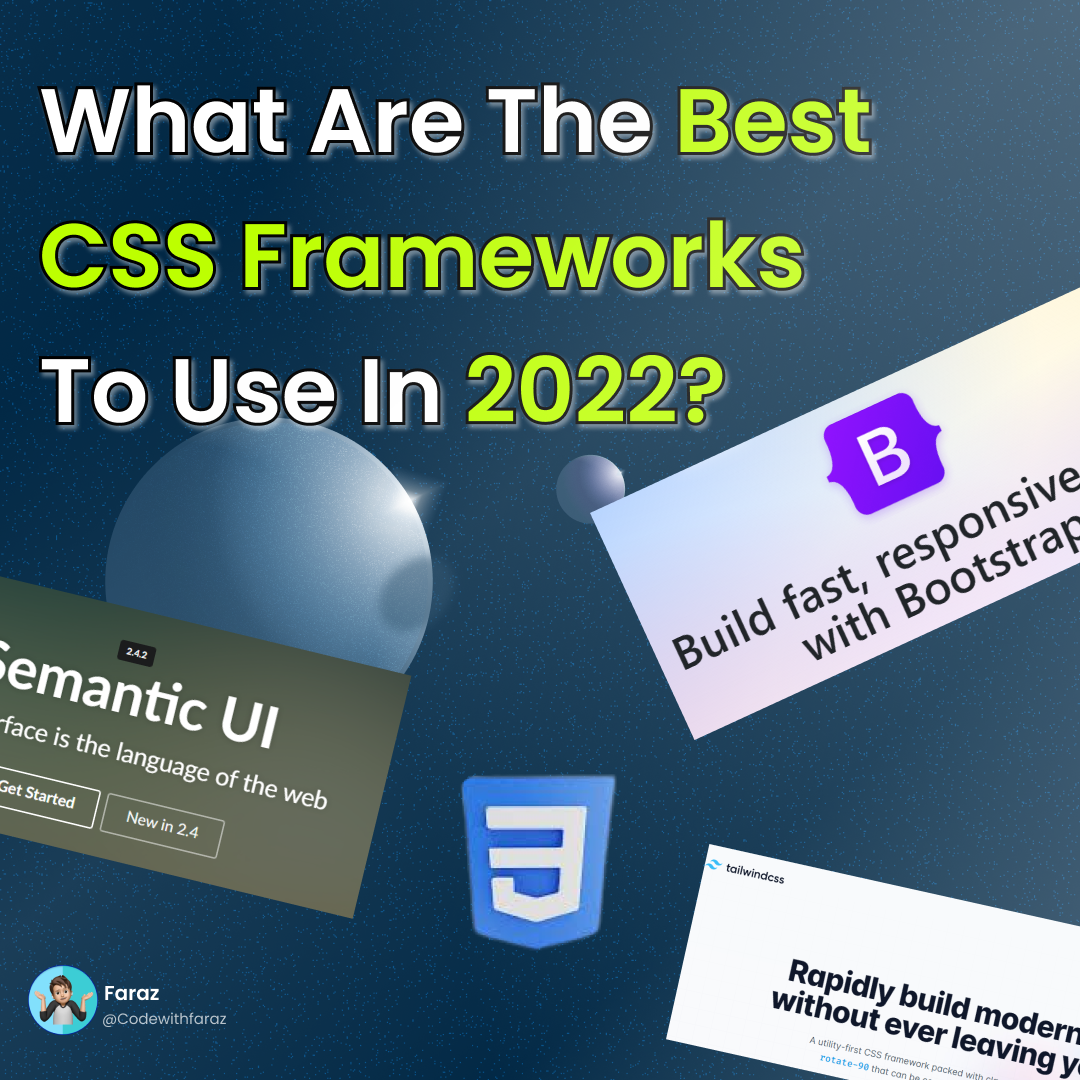Tube Rank: Your Guide to Video Success
Discover tips and insights for optimizing your video presence.
CSS Frameworks: Your New Best Friend in Web Design!
Discover the game-changing CSS frameworks that will revolutionize your web design! Transform your projects and boost efficiency today!
Understanding the Basics of CSS Frameworks: What You Need to Know
CSS frameworks are pre-prepared libraries that make web development quicker and easier by providing a standard way to style HTML elements. They offer a set of pre-defined classes and components that help streamline the design process, allowing developers to focus on functionality rather than starting from scratch. Some popular CSS frameworks include Bootstrap, Foundation, and Bulma. By using these frameworks, developers can ensure that their website is responsive and consistent across different screen sizes and devices.
When choosing a CSS framework, it's important to consider factors such as flexibility, community support, and ease of use. Many frameworks come with built-in grid systems, responsive utilities, and customizable components, which can significantly reduce development time. Additionally, most CSS frameworks are designed to be modular, meaning you can include only the parts you need. This approach not only keeps the file size down but also helps in maintaining optimal performance and speed for your website.

Top 5 CSS Frameworks to Boost Your Web Design Skills
When it comes to enhancing your web design skills, utilizing a CSS framework can significantly streamline your workflow and improve the overall aesthetics of your projects. In this article, we will explore the Top 5 CSS Frameworks that not only speed up the development process but also provide robust tools and components to elevate your designs. Whether you are a beginner or an experienced developer, these frameworks can help you create responsive layouts with minimal effort.
- Bootstrap: Known for its mobile-first approach, Bootstrap is the most popular CSS framework that empowers developers to build responsive websites quickly.
- Tailwind CSS: This utility-first framework allows for unparalleled customization, enabling designers to create unique aesthetics without having to override existing styles.
- Foundation: Developed by ZURB, Foundation is a responsive framework that focuses on mobile usability, offering a variety of components that are perfect for advanced front-end developers.
- Bulma: A modern CSS framework based on Flexbox, Bulma is known for its simplicity and ease of use, making it an excellent choice for both newbies and seasoned web designers.
- Semantic UI: Emphasizing human-friendly HTML, Semantic UI offers a unique approach to class names, allowing for more readable themes and layouts.
How to Choose the Right CSS Framework for Your Next Project
Choosing the right CSS framework for your next project can significantly enhance your workflow and the end product. Consider your project requirements first; if you're building a large-scale application with complex layouts, a robust framework like Bootstrap or Foundation could be beneficial. On the other hand, if you're working on a simpler website or a prototype, you might prefer a lightweight framework such as Bulma or Tailwind CSS. Evaluate the level of customization you need, as some frameworks offer extensive options while others have a more rigid structure.
Another important factor to consider is community support and documentation. A framework with a vibrant community will provide ample resources, tutorials, and plugins that can save you time during development. Read user reviews and forums to gauge the level of ongoing support for the framework. Don't forget to consider the learning curve as well; some frameworks might have steep learning curves that could delay your project. In summary, balancing your project needs, customization options, community support, and ease of use will guide you in selecting the best CSS framework for your upcoming work.